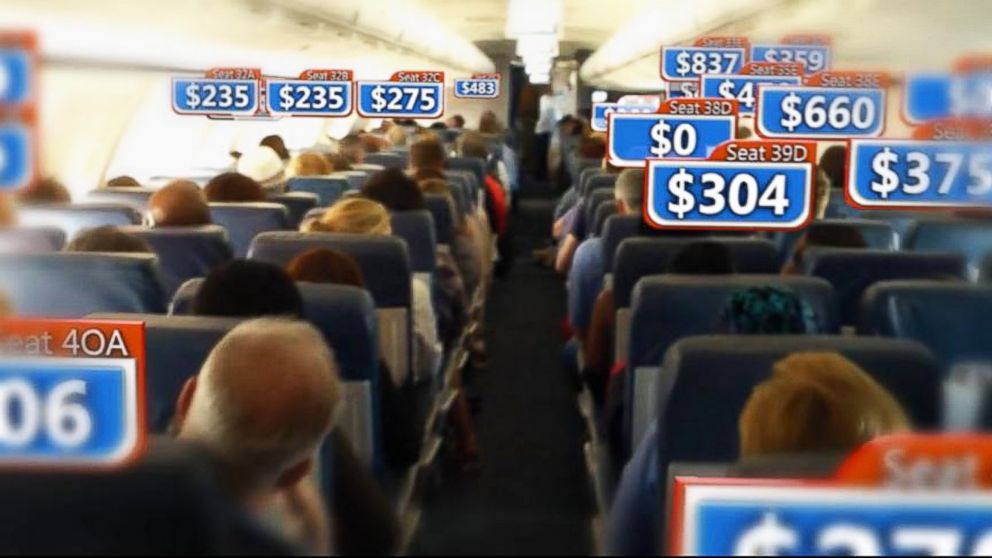 Anyone who’s ever shopped airfare pricing is acutely aware that when you buy an airline ticket, you may pay hundreds of dollars more or hundreds less than someone purchasing a ticket for an identical trip. A typical domestic flight has about 10 ticket prices or price points for its economy class. The top end of this price point is relatively uniform across domestic routes (international flights are different), and the top price point is typically between $600 and $900 one-way for legacy airlines, and between $500 and $600 for low cost carriers.
Anyone who’s ever shopped airfare pricing is acutely aware that when you buy an airline ticket, you may pay hundreds of dollars more or hundreds less than someone purchasing a ticket for an identical trip. A typical domestic flight has about 10 ticket prices or price points for its economy class. The top end of this price point is relatively uniform across domestic routes (international flights are different), and the top price point is typically between $600 and $900 one-way for legacy airlines, and between $500 and $600 for low cost carriers.
Overall, airfare cost is about the same as last year in large part because of reduced travel and competition from low cost carriers which drives down airline fares. Cheap airfares are often announced by the airlines to help increase flight loading during slow periods or to match fares offered by competitive airlines. The very cheapest airfares disappear quickly. There are few of them and a lot of competition for the cheapest fares.
The bottom end of the airfare price range depends on the following variables, listed in order of importance:
• Competition on Route
• Seat Demand
• Distance of Route
• Seat Supply
• Fuel Prices
Business travelers typically are far less price conscious and more prone to buy expensive, last minute tickets than leisure travelers. The typical leisure traveler is price conscious while more flexible on travel dates, connecting flights and sometimes a destination. Choosing the right destination, if an option, allows travelers to get more for their money.
Airfares are the unit of measure for these price points and they have rules (or hurdles) associated with them. If taken advantage of, a traveler can move down from a high price point to a lower pricing level. Some of the hurdles to clear in order to be in the elite group that pays the cheapest amount for airfare are:
- Advance Purchase – The cheapest airfare typically requires ticket purchase at least 14 days before departure while on some low cost airline routes it’s 7 days.
- Minimum Stay – The cheapest prices often requires a stay of at least 2 nights. Other cheap tickets require a Saturday night stay. This works against most business travelers.
- Departure Day Requirements – Increasingly, cheap airfare requires a departure or return on Tuesday, Wednesday or Saturday. This is because those are the slowest air travel days. A seven-night Tuesday to Tuesday or Wednesday to Wednesday trip saves on average 22 percent and about $86 less than traveling on a Friday, Saturday or Sunday.
- Flight Time Requirements – The cheapest airfares in many cases restrict departure times to the least popular times to travel, including first flights out in the morning, after lunch and after dinner.
- Travel Window – Often, airfare sale prices set a travel departure window. A person can’t buy cheap tickets in winter for the popular summertime vacation season. The window is usually two to four months from the date of ticket purchase.
- Purchase Date – Recent airfare sales have been good for three days only with some airfare promotions ending after one day.
- Flight Restrictions – Many times the cheapest fares exclude nonstop airline routes.
- Blackouts – High passenger traffic times of the year, such as Christmas and the summer vacation season, are typically blacked out and the cheapest flights are not available for these time periods.
- Surcharges – The popular days to fly or peak travel days are often slapped with an extra fee, such as a surcharge, anywhere from $10 to $30 each way. Historically, there have been fuel surcharges when oil prices are high.
In closing, savvy travelers rarely pay full fares when it comes to air travel. Use to your advantage that many airlines announce sales on Monday or Tuesday with many ticket discount offers over by Thursday. Buy airline tickets no earlier than three months in advance and no later than two weeks ahead of a trip. Also, look into mileage award and frequent flyer credit card programs.
